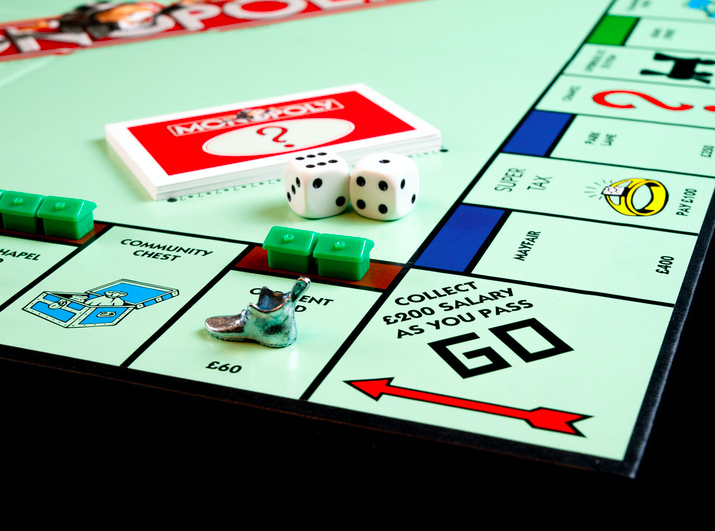
I remember sitting down with family friends on a winter’s afternoon and playing Monopoly as the wind and rain prevented anything constructive from happening outside. When I look at how the game works, it is very linear. You can only move in one direction, you can only progress when it is your turn, as soon as someone buys a property you are always at their mercy and if you get lucky you buy Mayfair and Park Lane and control the game. If you got behind and were playing ‘property purchase catch up’ the game got very boring and you wanted just to pack it in.
The similarities between this and school are quite frightening. Generally we have a system that only allows students to progress when it is their turn (i.e. using their chronological age as the determining factor). If they don’t understand the subject matter they spend a lot of time just going through the motions. If someone does gets it, others feel left behind as they now don’t have control of the knowledge and may see the ‘game’ as a pointless exercise ending when the bell rings.
Investigating gamification and how to look at learning as not necessarily linear at all times is an option that can be applied to schools. I note that most teachers want to develop learning environments where students can operate in their preferred modality. Additionally, the breadth of knowledge and wisdom teachers have in relation to their subject area is one of the best resources a school can have. Recurring comments from teachers show an enthusiasm to explore new pedagogies, but these become tainted with the uncertainty of how to bring these concepts to life in the classroom. Some see how it would work in the middle school, but predict limitations when trying to apply it to senior classes when so many assessment restrictions are enforced by external assessment boards.
[bctt tweet=”the breadth of knowledge teachers have in their subject area is one of the best resources a school has” username=”adifrancis”]
By looking carefully at what aspects of a course you could ‘gamify’ (for want of a better term) there is scope to be able to apply this design model to some course work and blend it with other aspects of current practise.
The struggle we have as teachers often comes down to time; time to process the thought behind non-linear construction, time to re-think how we were taught (and taught how to teach!), time to reflect on a system we operate within and time to plan, construct, critique and produce work to maximise learning opportunities. Often with professional development we have a couple of sessions and then hit the ground running the next day, with all that we have seen and been inspired by a distant memory by the time we sit down for a cup of tea and a piece of cake at recess time.
There is value in structuring release time after professional development sessions, with a facilitator on hand to guide and encourage teachers to utilise their years of experience to create alternate learning environments for their students. Maybe a re-think of how professional development is offered is on the cards and will bring good dividends.
[bctt tweet=”blended learning environments allow students to operate in their preferred modality of learning” username=”adifrancis”]
By utilising the wisdom and experience of staff and creating blended learning environments, students should be able to operate in their preferred modality of learning whilst controlling certain aspects of their learning pathway.
Some of our kids are stuck in a game of educational Monopoly, losing motivation and having nowhere to go as it is raining outside. It is our responsibility to maybe pack away the Monopoly board and introduce a new paradigm to them.










